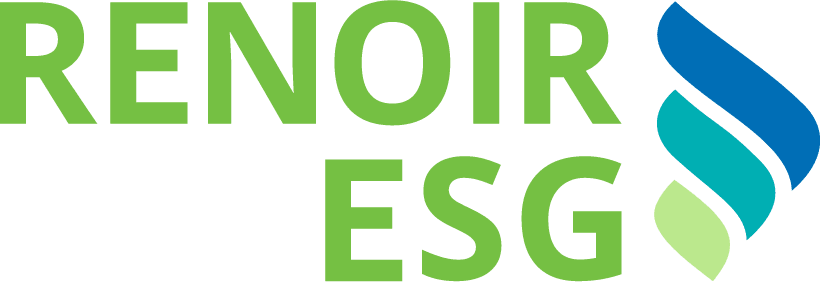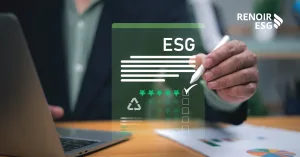At a Glance:
- As climate impacts intensify globally, understanding who drives sustainability initiatives—and how effectively they do so—is crucial for accelerating progress.
- This article examines leadership’s evolving role in global sustainability since the 2015 Paris Agreement, highlighting the changing landscape of sustainability leadership in government, business and civil society, and leadership’s impact on sustainable development progress.
Let’s get one thing clear— the world is not on track to reach the Paris Agreement goal to limit the global average temperature rise to 1.5°C above pre-industrial levels. According to this 2025 studies, current Nationally Determined Contributions (NDCs) are inadequate to limit warming to 1.5°C. Most countries have missed deadlines to update their NDCs, and even if fully implemented, these pledges would only limit warming to around 2.3°C by 2100.
When the Paris Agreement was first signed in 2015, there are several climate action relevant documents that countries need to issue such as Biennial Transparency Report (BTR), Low Emission Development Strategy (LEDS) and more. One of the agreement’s unique features was requiring countries to develop their own climate action plans, known as Nationally Determined Contributions (NDCs). These outlined each nation’s commitments to reduce greenhouse gas emissions and adapt to climate impacts.
The NDCs were meant to be revised every five years to increase ambition over time. It created a framework for governments and businesses to collaborate, introduced flexible yet ambitious goals, and fostered an environment where sustainability became a strategic priority. However, core factor such as leadership often prioritised short-term economic growth on a business-as-usual trajectory over sustainable long-term growth, viewing environmental protection as a secondary concern.
Fast forward to today, leadership has significantly evolved. Business leaders now view sustainability as integral to long-term success, influencing corporate strategy, fostering cross-functional collaboration, and engaging stakeholders more deeply. This shift in leadership mindset has driven real change, embedding sustainability as a core element of business strategy, rather than an afterthought.
What is the shift in sustainability over the years?
Sustainability has evolved from being seen as a matter of Corporate Social Responsibility (CSR) to a business imperative. This shift is driven by demands from investors, employees, activists and consumers.
Some of the challenges at the beginning of Post-Paris Agreement era include:
- Lack of enforceability poses a challenge in ensuring countries meet their commitments, especially for major emitters like the U.S. and China as it is not fully legally binding.
- The allocation of short-term and mid-term financial support was not clearly specified, creating uncertainty and challenges for developing countries.
- Traditional business processes were designed in a “pre-sustainability era” where profit was the primary concern. Embedding sustainability into every process and trade-off decision is crucial
- Sustainability data is complex due to the vast number of data points and the diverse reporting standards. The data is complex because sustainability impacts multiple facets of a business, requiring collaboration between various departments to consolidate and interpret.
Leadership has profoundly influenced the shift in sustainability over the years by evolving in response to global challenges, stakeholder expectations, and technological advancements.
How leadership has driven this transformation.
Leadership paradigms at UNFCCC:
The approach to climate leadership at the United Nations Framework Convention on Climate Change (UNFCCC) has evolved through different paradigms, from developed countries taking the lead initially, to a period of conditional leadership, and then to a stage of leadership in recession.
This evolution signifies a move from a primarily top-down approach, where developed countries were solely responsible, to a more distributed model recognising the shared responsibility of all nations.
Decisions made under the UNFCCC, such as those related to the Paris Agreement, are primarily implemented at the national level through domestic policies and actions taken by Parties as part of their contributions to the UN climate regime.
Governments translate the goals and commitments of UNFCCC agreements into domestic laws, regulations and policies.
For example, countries may implement policies to promote renewable energy, improve energy efficiency, or put a price on carbon emissions, all in line with their NDC and broader UNFCCC goals.
From siloed to integrated sustainability:
Previously, sustainability efforts were often confined to specific departments, such as a corporate social responsibility (CSR) or environmental affairs team. This siloing has limited the impact and relevance of sustainability within the wider organisation, and it was often perceived as a ‘nice-to-have’ or marketing tool, rather than a fundamental driver of business strategy.
There is a shift from sustainability being confined to specific departments to becoming an integral part of core business practices, requiring leaders to break down silos and foster collaboration across functions.
For example, all organisations committed to sustainability need to include in their plans their Scope 3 emissions, which are the emissions generated indirectly from their value chain. Effectively addressing Scope 3 emissions cannot be done in isolation by a single sustainability department. It requires deep engagement and collaboration with various other functions within the value chain, such as supply chain, logistics, and more.
Role of top leadership:
The CEO’s leadership is vital in embedding sustainability into business strategy and engaging the whole organization. While the Chief Financial Officer (CFO), and Chief Sustainability Officer (CSO) may not directly address the board, they communicate their objectives through a designated board committee. This structure ensures that sustainability goals are aligned with financial strategies.
Effective collaboration between the CFO, CSO, and the board committee is crucial for driving sustainability ambitions across the organization and coordinating efforts within governance. By leveraging this collaborative approach, leaders can also effectively engage both internal and external stakeholders in their sustainability agenda.
Emphasis on long-term vision:
Business leaders are now considering the long-term implications of their decisions, including low-carbon technologies, many of which have yet to demonstrate their commercial viability. Bases on a study, Young Global Leaders are implementing specific strategies and initiatives to achieve a balance between short-term success and long-term sustainability. This includes implementing economic reforms that prioritise sustainable development, such as renewable energy and efficient water management.
Data-driven decision-making:
Leadership in sustainability requires robust data management to substantiate claims, ensure transparency, and make informed decisions. The growing availability of ESG data has made it easier for companies to measure their performance and for investors to assess risks and opportunities. Advances in technology have also enabled better tracking of metrics like carbon emissions, energy use, and supply chain sustainability.
Recognising the complexities of translating global climate commitments into actionable corporate strategies, Renoir offers a comprehensive suite of services designed specifically for organisations navigating sustainability challenges.
Our approach begins with our proprietary assessment process, which evaluates an organisation’s current positioning against industry benchmarks and regulatory requirements.
From there, their team of sector specialists works closely with executive leadership to develop tailored roadmaps that align business objectives with sustainability goals.
Build agile ESG frameworks that adapt to changing demands.











